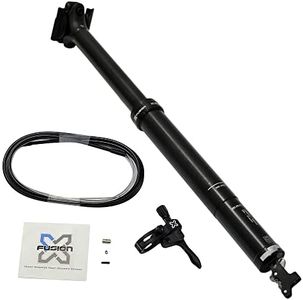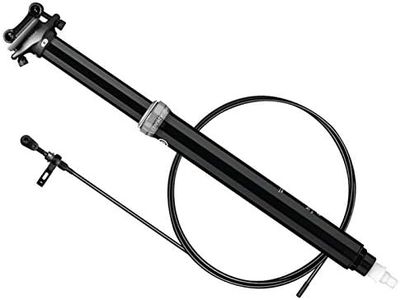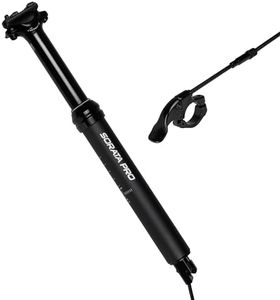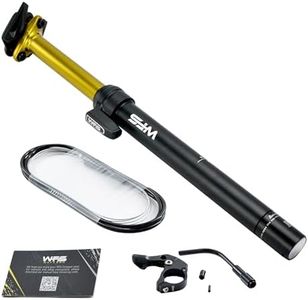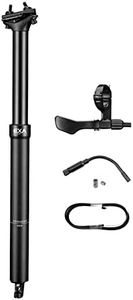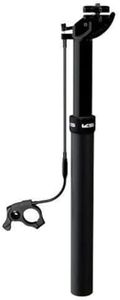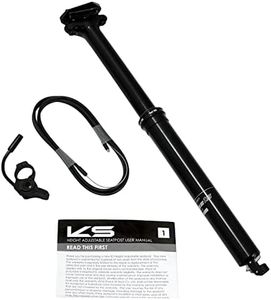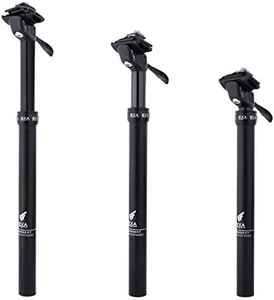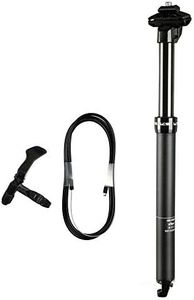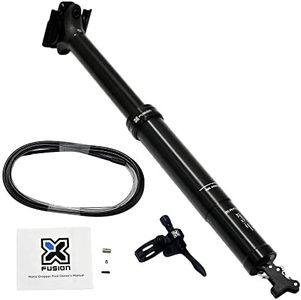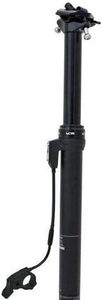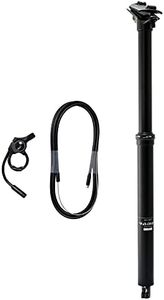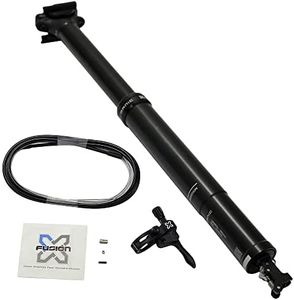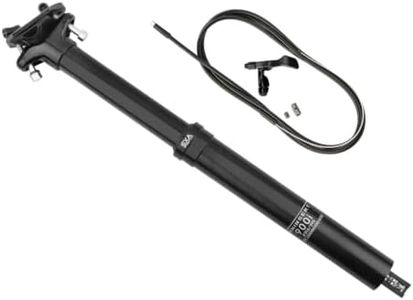We Use CookiesWe use cookies to enhance the security, performance,
functionality and for analytical and promotional activities. By continuing to browse this site you
are agreeing to our privacy policy
10 Best Dropper Post
From leading brands and best sellers available on the web.By clicking on a link to a third party's website, log data is shared with that third party.
Buying Guide for the Best Dropper Post
Choosing a dropper post can hugely improve your comfort and control when riding a bike off-road or on trails. A dropper post lets you easily and quickly adjust your saddle height while riding, making it easier to climb, descend, or ride technical sections. To pick the best dropper post for your needs, you'll want to understand the main specifications and decide what matters most for your riding style and bike setup.Drop LengthDrop length refers to how far the saddle can move up and down. This is important because a longer drop gives you more room to move around on tricky descents, but a shorter drop can be sufficient for cross-country or less technical riding. Drop lengths usually range from about 100mm to over 200mm. If you ride steep or technical trails, a longer drop can boost your control, while shorter drops are fine for riders who value climbing or don’t ride aggressive terrain.
DiameterThe diameter of a dropper post must match the inside diameter of your bike’s seat tube. Common sizes are 27.2mm, 30.9mm, and 31.6mm. An exact match is necessary for safety and fit, and the size is usually written on your current seatpost or marked on the seat tube. Measure or check your bike specifications to ensure you buy the right diameter.
TravelTravel is another word for drop, representing how much up-and-down motion the post allows. More travel can mean better movement but may not fit smaller or less modern bike frames. Balance the benefit of increased mobility with the actual space available in your bike’s frame, and consider your own height—taller riders tend to benefit more from longer travel.
Actuation (Remote Style)Dropper posts are operated via a remote, which can be mechanical (cable-actuated) or hydraulic. Cable systems are simpler, easier to fix, and widely compatible, while hydraulic systems can offer smoother action but require more maintenance. Choose the style that matches your preference for simplicity versus performance, and make sure the remote can be mounted alongside your shifter and brakes.
RoutingRouting regards how the remote cable is connected—from the inside of the frame (internal or stealth routing) or from outside (external routing). Internal routing is neater and protects the cable, but your bike frame must have internal guides. External routing is easier to install or swap but can catch on things. Pick according to your bike frame’s compatibility and how much you value tidiness versus ease of setup.
WeightHeavier dropper posts might affect how light your bike feels, but lighter ones may be less strong or more expensive. Weight matters most if you’re focussed on speed, climbing, or racing. For general riding, slight weight increases are usually worth the added functionality and control.
Minimum Insertion LengthThis is the minimum length of the post that must always be inside the frame for safe operation. It matters because smaller bike frames or riders with a low saddle may be limited by long insertion needs. Make sure the post will fit fully into your bike without forcing you to ride with an uncomfortable saddle height.
